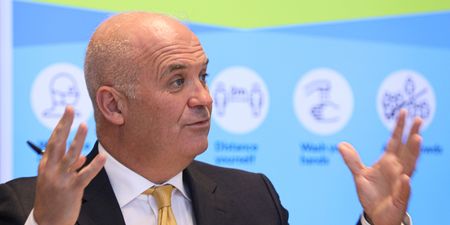“We’ve never needed ventilators on the scale that we need them now.”
The Covid-19 outbreak has triggered an unprecedented need for many different types of medical supplies.
Donations of masks, gloves, and gowns have been rife since the pandemic began, but there remains a shortage of one piece of equipment that is vital to save countless lives: ventilators.
That’s where the #KeepBreathing campaign comes in.
Galway based engineer Aaron Hannon is part of the Covid Response Team (CRT); a group of engineers, doctors, and students who have recently redirected their research to address the problems posed by the coronavirus pandemic.
“We were looking at ways to refocus and contribute to some of the issues around the outbreak,” Hannon tells Her.
“We had been in touch with a lot of people and we all identified the same problem – the shortage of ventilators. We then came up with a method to solve that.”
CRT’s solution is a new, open-source, simplified ventilator – one that is inexpensive to build and could be easily distributed to hospitals around the world.
CRT yesterday successfully delivered 20 ventilator support stands after a supply chain issue stopped a delivery to Cork University Hospital. This meant that 20 ventilators from abroad could be brought straight into use! Issuing Emergency Ventilator updates soon #KeepBreathing pic.twitter.com/fTa2OwyYdx
— COVID Response Team (@covid_team) March 30, 2020
Doctors in Italy are already experiencing a shortage of ventilators as they deal with their own influx of coronavirus patients.
The lack of equipment has forced them to make incredibly difficult decisions around which patients get to live and which get to die – decisions Hannon says could be avoided if more ventilators were readily available.
“We’re seeing desperate and sad situations in Italy and Spain,” he says.
“Ultimately, you’re getting patients who are less likely to survive and they’re being taken off ventilators because of that. Our mission is to make sure that this stops happening.”
Where a regular ventilator could cost anywhere between $20,000 and $50,000 to build, the CRT’s open source design would reduce the cost considerably.
Once a working ventilator design is built and passes all the relevant tests, it can be distributed for free and then produced at cost price. The ventilators could technically be built anywhere in the world, as long as there is access to a 3D printer.
While Hannon says that the group don’t yet have a definite target cost, they are aiming for somewhere close to $200 – a considerable reduction that would make it easier for hospitals in Ireland to manage the effects of Covid-19.
“We’ve never needed ventilators on the scale that we need them now,” he explains.
“In Ireland, we’d typically have about 7,000 patients on a ventilator every year, and we do have the supply for that.
“The problem is that if our rates of Covid-19 do increase as expected, we could have 60,000 patients by the end of the summer. That’s the huge increase that ICUs elsewhere are struggling with.”

The CRT’s campaign is supported by a new coronavirus lockdown challenge set up by Dublin agency, Event Fuel. The group want to encourage families to continue reaching their 10,000 steps a day – without leaving the house.
Those participating in their Step Up, Stay Put challenge can choose to donate funds to a charity of their choice, or give their support directly to the CRT’s ventilator campaign.
Since its launch, the fundraiser has already surpassed its expected goal and at the time of writing, is currently resting on just over €140,000.
Hannon says that the surplus funds will go towards accelerating the prototype building process, as well as providing other resources to ensure that healthcare workers in ICUs can continue to work safely.
“We’re absolutely so grateful to everyone who has shared the campaign and donated already, because it means that we can work faster,” he says.
“We’ve been working round the clock and we do have prototypes pumping air at the moment. Something that we usually talk about taking four or five years has now been reduced to four or five weeks – and it’s the support that has allowed us to do that.”
You can find out more about the Keep Breathing fundraiser here, and the Step Up, Stay Put campaign here.



















































